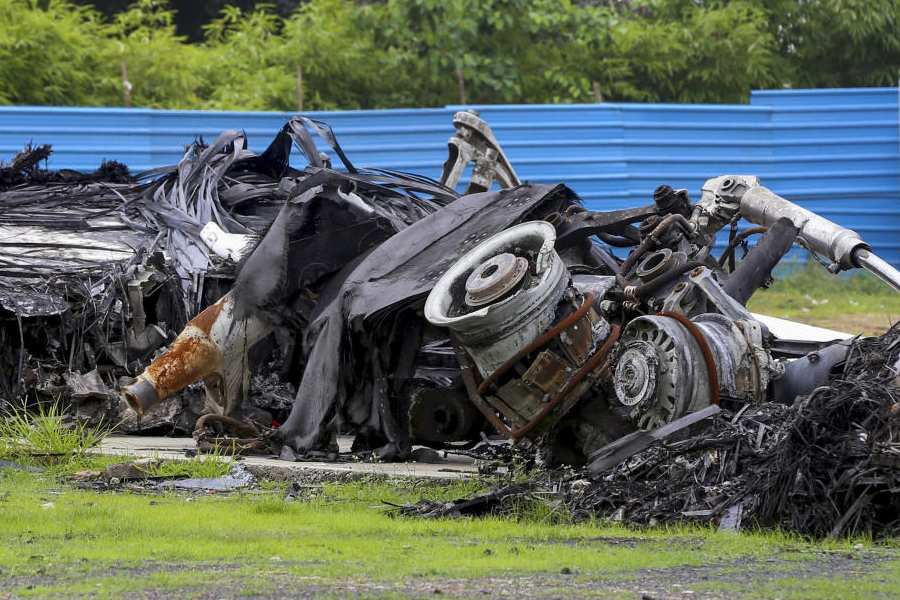Howrah: Calcutta Port Trust, the custodian of the 75-year-old Howrah bridge, follows a standard operating procedure for maintenance that most bridges and flyovers elsewhere in Bengal lack.
The Howrah bridge has 78 hangers and the cantilever structure has been designed in such a way that the load first gets transferred to the girders under the belly of the deck, from where the hangers shift the weight to the structure overhead. Being on the river, corrosion is one of the bigger challenges that the maintenance team faces.
Metro highlights the fitness regimen of a bridge that is counted among Calcutta's most recognisable symbols.
Expansion joints
The expansion joints are separations between two slabs of the deck and are meant to absorb the temperature-induced expansion and contraction of construction materials, besides vibrations caused by earthquakes or soil subsidence. The joints are covered in rubber sockets to reduce corrosion. Every winter, a team of workers supervised by engineers examines each joint for signs of rust or any defect.
"If the rubber is damaged, dust and debris accumulate in the joints. Rainwater seepage is another threat and can potentially damage the steel girders under the deck and the bearings that support them. If any or all of these things happen, the safety of the bridge is compromised," an engineer said.
If and when a rubber wears out, the joint is cleaned and the socket replaced with a new one. "This is done once a year," the engineer said.
Underbelly
Mechanised trolleys fixed to the underbelly are generally used once a month to check the belly of the bridge. The trolleys move from one end of the structure to another, covering 1,500 feet.
"Any corrosion is a red flag. If rusting happens, the affected portion is cleaned and a coat of paint is applied to prevent further damage," an official said.
The maintenance team's brief is to also monitor and promptly repair damage caused to the bridge by vehicles.
Bird nests
A unit of the maintenance team is dedicated to the upkeep of the bridge's upper structure. These workers are trained to climb the steel bars of the bridge, spot bird nests and remove them.
"Crows and kites nest on the structure. Their droppings contain acids that, if not cleaned regularly, can cause serious damage to the steel," an official said.
Workers are deployed every week to remove the nests. They also check for defects and damage.
Carriageway
The carriageway of this British-built bridge used to be relaid once almost every one-and-a-half years. In 2008-09, the port trust replaced the standard bitumen coat with the much more durable but expensive mastic asphalt. The surface did not require any major maintenance for the next four years. Since then, only mastic asphalt has been used on the road.
In 1983, consulting agency Rites had mentioned in a report that putting a new layer over the existing surface could prove counter-productive. Based on that recommendation, the port trust has followed the practice of scraping off the old layer before putting a new one.
One of the reasons cited for the collapse of the Majerhat bridge is the increase in the weight of the structure every time a layer was added over the previous surface.
Painting
The frame of the bridge gets a coat of paint every six years to protect the steel from rust. The bridge last received a coat of paint in 2014.
Expertise
The port authorities routinely solicit expert opinion on how to maintain the structure. The National Metallurgical Laboratory in Jamshedpur is known to have given suggestions to prevent corrosion of the four anchors, each 80ft deep. Help has also been sought from IIT Madras.










